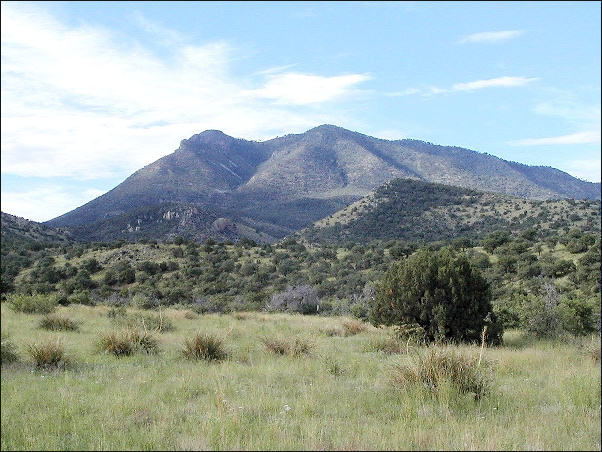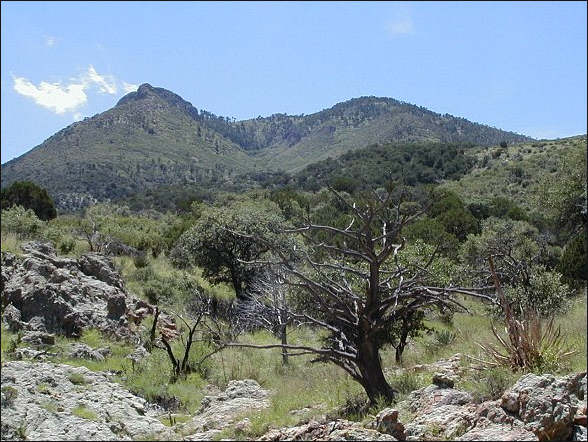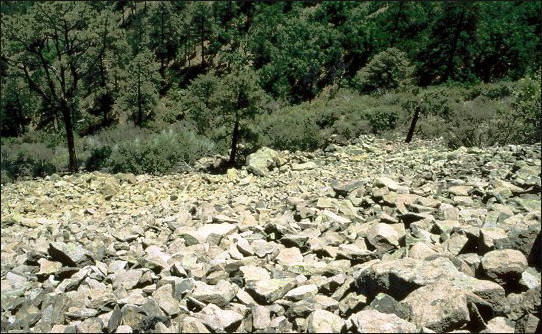
A prominent feature of the Chihuahuan Desert Region is the occurrence of highlands rising above the desert proper, producing a variety of microhabitats and affecting the climate of the surrounding lowlands. Generally, the montane habitats receive more precipitation than the desert, and the varied topography provides a plethora of microclimatic conditions. In a sense, the highlands are islands of greenery and diversity within a sea of aridity, recognized by the popular name of "sky islands".
The Animas Mountains, located in the bootheel of New Mexico, forms one such sky island and is used here to illustrate the contrast between lower-elevation vegetation and the highland habitats. The range has received considerable attention from scientists and others because its flora and fauna basically reflect its position as a northern outlier of the Sierra Madre Occidental. The New Mexico Department of Game and Fish has carried out research in West Fork Canyon over a number of years. The photographs below are courtesy of one of the departments researchers, Larry K. Kamees.

Animas Mountains, Hidalgo County, New Mexico, from the north. The high point on the left is Indian Peak and that to the right is Animas Peak; the head of West Fork Canyon lies between. The foothill vegetation in the foreground includes grasses, beargrass (the clumps), and junipers. Photograph by Larry K. Kamees.

Same as above, but from a higher elevation. Photograph by Larry K. Kamees.


Looking north to the west-facing slope of West Fork Canyon, Animas Mountains. The igneous rock has broken down to form large talus slopes. The other photograph is of the lower part of one of those talus slopes and shows the character of these flows. The vegetation seen here at the bottom of the canyon and on the lower east-facing slope is quite different from the dense, low vegetation of the west-facing slope. Photographs by Larry K. Kamees.
Some of the typical vegetation and other landscape views of the Animas Mountains are shown on the next page.